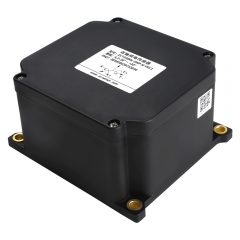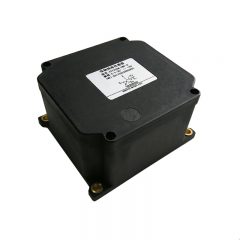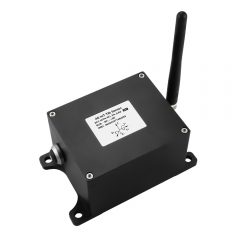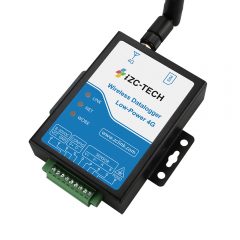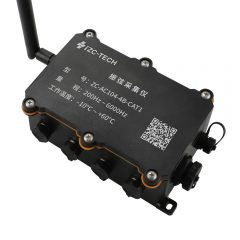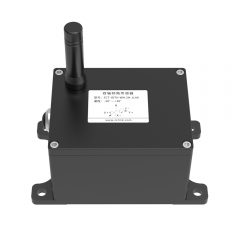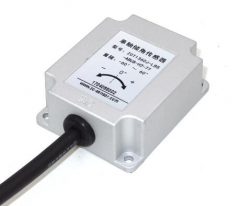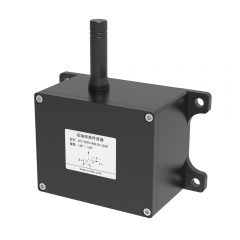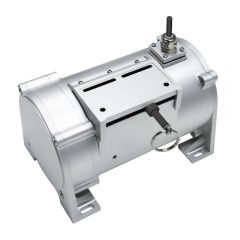With the advent of the Internet of Everything, the connection between things is constantly developing and updating. If the sensor is the tactile sense of the Internet of Things, then wireless transmission is the nervous system of the Internet of Things which connects sensors to the Internet of Things. Before the emergence of the Internet of Things, the network access requirements were mainly reflected in the Internet access requirements of PCs and mobile terminals. Nowadays, with the development of the Internet of Things technology, wireless access is not only reflected in the network connection requirements of PCs and mobile terminals, but also the connection requirements between objects in an industrial production environment.
–———————– Short-Range Wireless Transmission———————-
The short-range wireless transmission technologies include WIFI, Bluetooth, UWB, MTC, ZigBee, NFC, and the signal coverage is generally between tens of centimeters and hundreds of meters. The short-range wireless transmission technology is mainly used in local area networks, such as home networks, factory-shop networking, and corporate office networking.
WiFi
![]()
Wi-Fi is widely used in many Internet of Things applications, the most common being as a link from a gateway to a router connected to the Internet. However, it is also used for major wireless links that require high speed and medium distance.
WiFi technology is not designed to replace Bluetooth or other short-range radio technologies. The application fields of the two are mostly different, although there will be overlaps in certain fields. WiFi devices are generally designed to cover hundreds of meters. If the antenna is strengthened or hot spots are added, the coverage area will be larger, and even the entire office will not be a problem.
WiFi wireless technology is mainly designed for mobile devices to access LAN (Local Area Network), WAN (Wide Area Network), and the Internet.
Basically, in the WiFi standard, the mobile device plays the role of a client, while the server is a network-centric device; there is a huge difference in peer-to-peer structure between NFC and Bluetooth technology.
l Support topology: star structure
l Use distance: short and medium distance (hundreds of meters)
l Application scenarios: mobile devices, etc.
Bluetooth

Bluetooth is a general-purpose short-range radio technology. Bluetooth 5.0 Bluetooth can reach up to 100 meters theoretically, but the typical application is mostly 10 meters on average.
Bluetooth’s feature is that it can easily carry mobile communication devices and computers, connect to the network without the help of cables, and transmit data and messages with higher speed, better signal transmission and better data security. At present, it is widely used in the connection between smart phones and smart wearable devices, as well as in smart homes and Internet of Vehicles.
l Support topology: point-to-point structure
l Operating distance: close range (100 m)
l Application scenarios: mobile devices, smart wearable devices, etc.
UWB
Ultra wide band UWB is a NON-carrier-wave communication technology that uses non carrier wave narrow pulses in the nanosecond to picosecond range to transmit data. The transmission distance is usually within 10 meters, using a bandwidth of more than 1GHz, and the communication speed can reach hundreds of MB / s Above, the working frequency band of UWB ranges from 3.1GHz to 10.6GHz, and the minimum operating frequency bandwidth is 500MHz.
Its main features are: high transmission rate; low transmission power, low power consumption; strong confidentiality; UWB communication uses a time-sequence sequence, which can resist multipath fading; UWB requires few radio frequency and microwave components, which can reduce the system's complexity. Due to the high bandwidth occupied by the UWB system, the UWB system may interfere with other existing wireless communication systems. UWB is mainly used in high-resolution "smaller range" radar and image systems that can penetrate obstacles such as walls and ground.
This device can be used to check defects in concrete and asphalt structures in buildings, bridges, roads, and other projects, as well as locate the fault location of underground cables and other pipelines, and can also be used for disease diagnosis. In addition, it is very useful in the fields of rescue, public security, fire protection, medical treatment, medical image processing, etc.
l Support topology: point-to-point structure
l Operating distance: close range (10 m)
l Application scenarios: rescue, public security, fire protection, medical applications
ZigBee

![]()
ZigBee is a low-speed and short-distance wireless network protocol. The bottom layer is the media access layer and physical layer using IEEE 802.15.4 standard specifications.
The main features are low speed, low power consumption, low cost, support for a large number of nodes, support for multiple online topologies, low complexity, fast, reliable, and safe.
The transmission range is generally between 10 and 100m. After increasing the transmission power, it can also be increased to 1 to 3km (between adjacent nodes). If the relay is used for routing and communication between nodes, the transmission distance can be farther.
l Support topological structure: star, tree, mesh structure
l Operating distance: short and medium distance (10meter-multiple km)
l Application scenarios: mobile devices, etc.
NFC
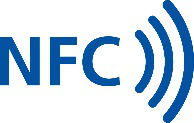
NFC is born out of "contactless radio frequency identification" (RFID) and interconnection technology. It is a non-contact automatic identification technology. It automatically identifies target objects and obtains relevant data and identification through radio frequency signals.
l Support topology: point-to-point structure
l Use distance: close
l Application scenarios: scan code, swipe card, etc.
–———————– Short-Range Wireless Transmission———————-
Long-distance wireless transmission technologies include GPRS, NB-IoT, Sigfox, LoRa, and signal coverage generally ranges from several kilometers to tens of kilometers. Long-distance wireless transmission technology is mainly used in the transmission of remote data, such as smart meters, smart logistics, and remote monitering.
GPRS

Mainly aimed at industrial-grade applications, it is a wireless Modem with embedded GSM / GPRS core unit. It adopts GSM / GPRS network as the transmission medium. It is an industrial-grade communication terminal based on mobile GSM short message platform and GPRS data service. It uses the short message of GSM mobile communication network and GPRS service to build a long-distance data transmission platform for users.
Compared with the short message service, GPRS is in real-time online status, and can process multiple or receive data from multiple detection points at the same time without stopping the current working status. It is very suitable for the system to collect data from multiple target points at the same time; GPRS not only has a long working distance, but also can perform two-way operation of the system. It is very suitable for some remote equipment operation and remote equipment upgrade applications. Because the GPRS network has covered most areas, there is basically no blind area, so there is no need to establish a separate communication network, only need to install the device and insert the SIM card, you can carry out network communication.
Mainly used in meteorology, hydrology and water conservancy, geology and other industries. GPRS real-time data transmission can also be used in securities, traffic inspection, industrial control, remote sensing, telemetry, mobile office.
NB-IoT
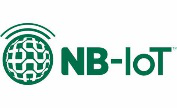
The Narrow Band Internet of Things (NB-IoT) has become an important branch of the Internet of Everything.
NB-IoT is built on a cellular network and consumes only about 180KHz of bandwidth. It can be directly deployed on a GSM network, UMTS network or LTE network to reduce deployment costs and achieve smooth upgrades.
NB-IoT is characterized by low frequency band, low power consumption, low cost, high coverage, and high network capacity, also known as "narrowband Internet of Things".
A base station can provide 50-100 times more access terminals than traditional 2G, Bluetooth, and WiFi, and typical NB-IoT device can work for ten years with only one battery.
l Support topology: star structure
l Use distance: long distance (above 10km)
l Application scenarios: IIOT, remote asset monitoring, smart city, bike sharing, etc.
LoRa
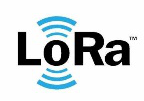
The name of LoRa is Long Range Radio, and its main feature is that it spreads farther than other wireless methods under the same power consumption condition, and realizes the unification of low power consumption and long distance. Under the power consumption, the distance is 3-5 times larger than the traditional wireless radio frequency communication.
l Support topology: star structure
l Operating distance: long distance (typically 2km-5km, up to 15 km)
l Application scenarios: IIOT, remote asset monitoring, smart city, etc.
.
SIGFOX

Sigfox is a French company established in 2009. It has created a wireless network to connect low-power devices, mainly used for low-power Internet of Things, such as electricity meters. Such applications need to continuously send a small amount of data. Sigfox hopes to establish the first global cellular connection for Internet of Things, whose infrastructure is completely independent of existing networks (such as telecommunications mobile networks).
Because the IoT connection uses low data rates, the Sigfox network utilizes ultra-narrowband, UNB technology. The transmission power consumption level is very low, while still maintaining a stable data connection. Sigfox wireless links use the unlicensed ISM radio frequency band. The frequency varies according to national regulations, but 868MHz is widely used in Europe and 915MHz in the United States. The entire Sigfox network topology is a scalable, high-capacity network with very low energy consumption, while maintaining a simple and easy-to-deploy star-unit-based infrastructure.
l Support topology: star structure
l Operating distance: long distance (typically 3km-10 km)
l Application scenarios: IIOT, remote asset monitoring, smart city, etc.
–——————————- Summary————————————–
In many scenarios, we need to consider multiple factors, such as customer data volume, data transmission distance, and cost. Therefore, it is wise to choose according to the scene.
In the field of Internet of Things, most sensors are using MEMS chips. In the factory, countless production equipment, materials and intelligent terminals use Wifi, Bluetooth, Zigbee and other short-range wireless technologies to achieve interconnection. But in some businesses & applications, it is necessary to use long-distance wireless transmission technology to transmit the data. At this time, enterprises can choose cellular communication technologies such as 3G and 4G, as well as low-power WAN transmission technologies such as LoRa, Sigfox, and NB-IoT.
We classify Wireless transmission requirements for IoT applications into 4 different settings:
First, high-power, high-speed WAN transmission technologies, such as 2G, 3G, and 4G cellular communication technologies, are suitable for high-volume transmission applications that require high real-time performance, such as GPS navigation and positioning, and video surveillance.
Second, low-power, low-rate WAN transmission technologies, such as Lora, Sigfox, NB-IoT, etc. This type of transmission technology is suitable for data transmission of the operating status of remote devices, data transmission of industrial intelligent devices, and terminals.
Third, high-power, high-speed short-distance transmission technologies, such as WIFI and Bluetooth, are suitable for connection and data transmission between smart homes, wearable devices, and M2M.
Fourth, low-power, low-speed short-distance transmission technologies, such as ZigBee. This type of transmission technology is suitable for flexible networking applications of LAN devices, such as hotspot sharing.
At present, the development trend of IoT wireless transmission technology is dominated by low-power wide-area networks. It can be expected that in the next few years, low-power wide-area network transmission technologies represented by Lora, Sigfox, and NB-IoT will gradually become the mainstream of IoT technologies.

